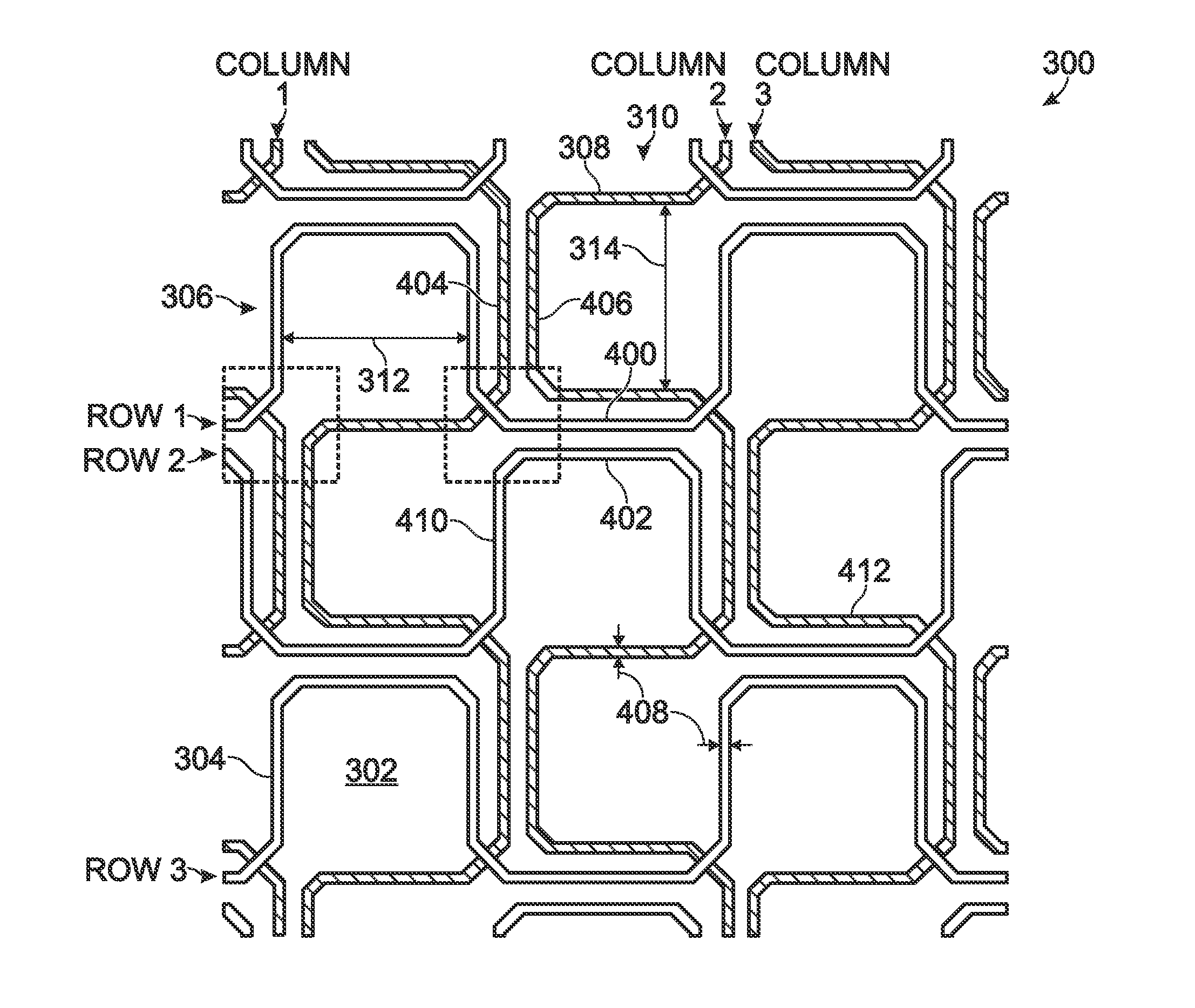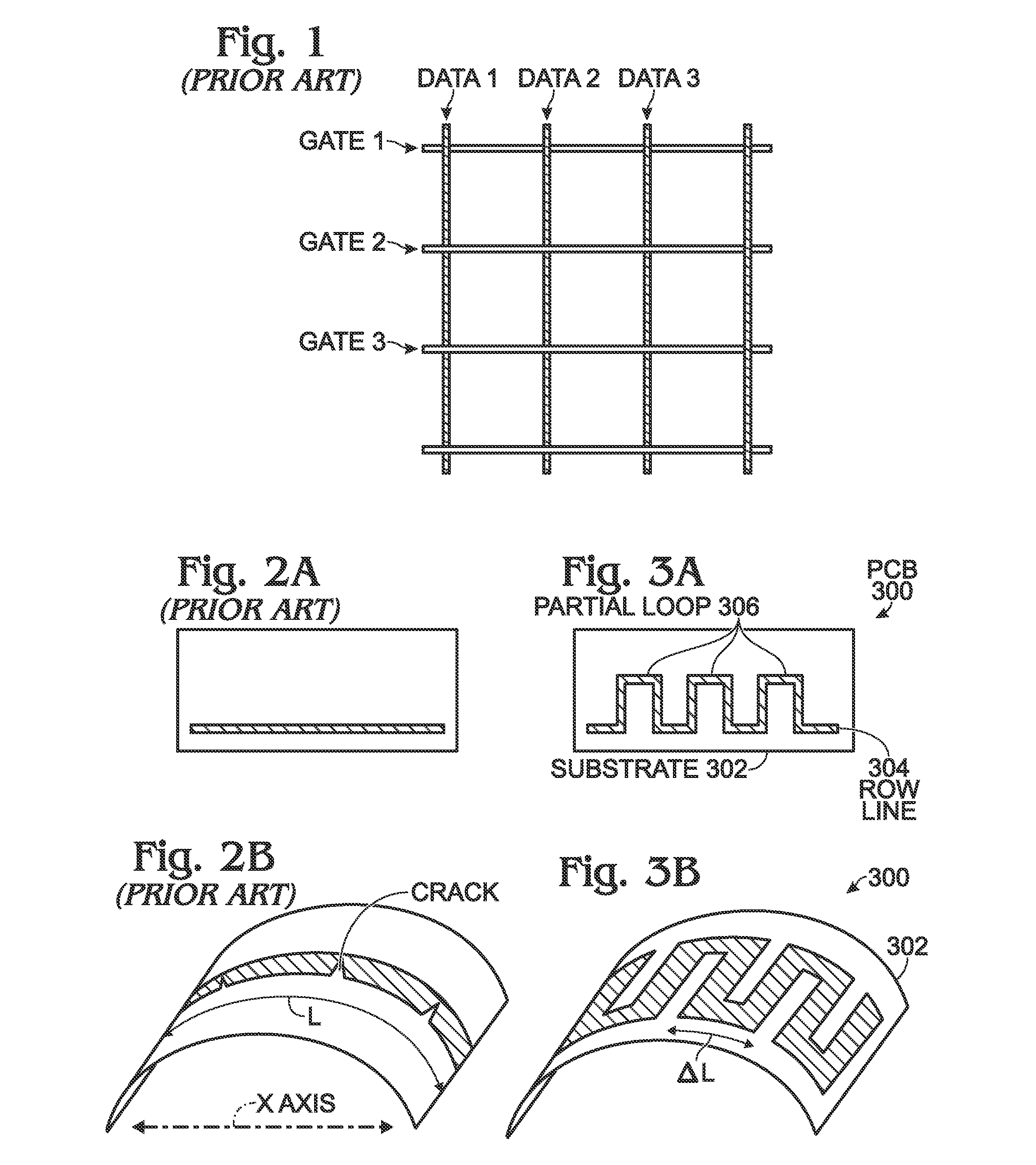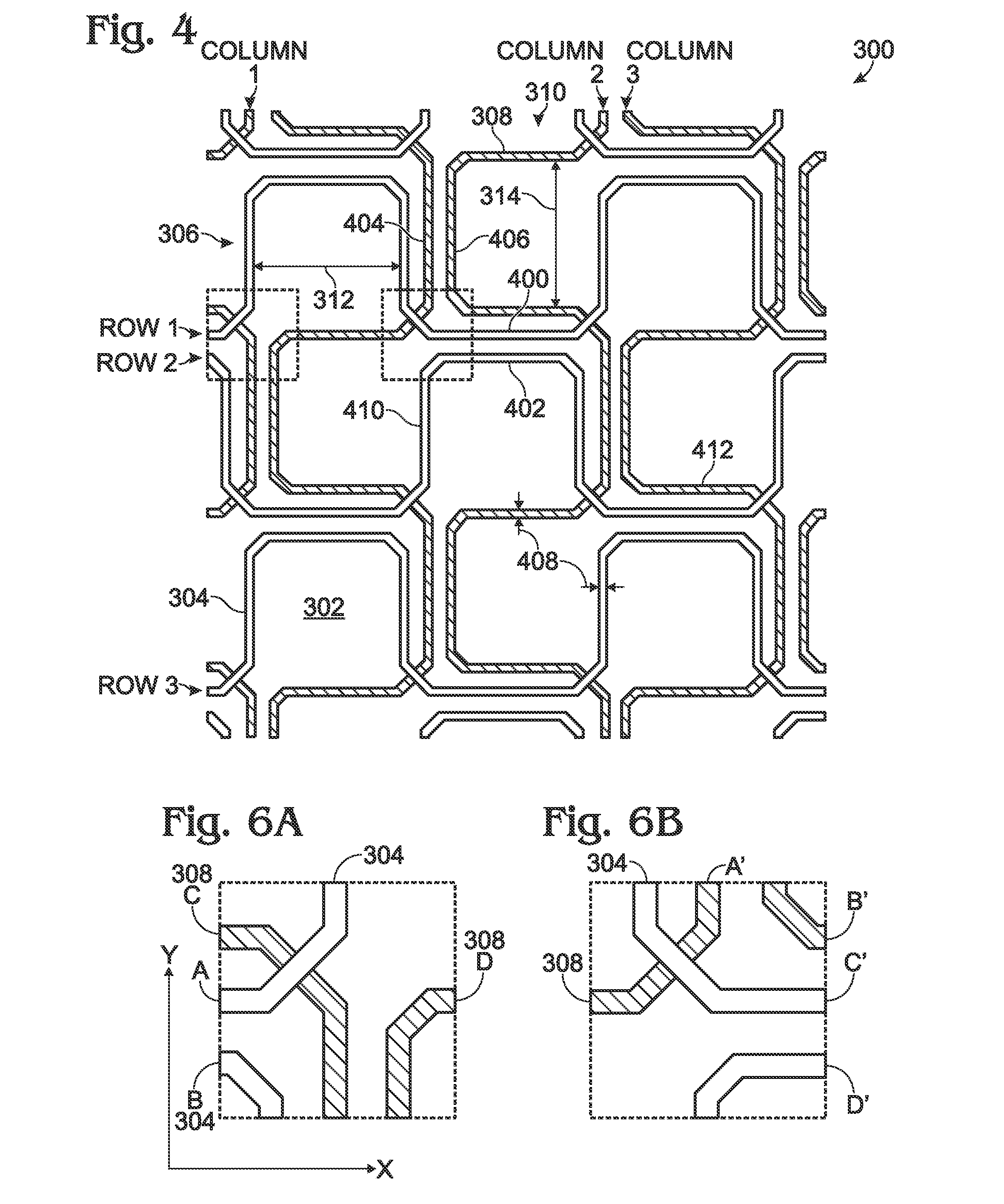Pixel Design for Flexible Active Matrix Array
a flexible active matrix and pixel technology, applied in the direction of dielectric characteristics, instruments, radiation control devices, etc., can solve the problems of micro-cracks, delamination and other defects, degradation of film performance, and complete failure, so as to reduce stress/strain, reduce stress/strain, and reduce the effect of bending radius
- Summary
- Abstract
- Description
- Claims
- Application Information
AI Technical Summary
Benefits of technology
Problems solved by technology
Method used
Image
Examples
Embodiment Construction
[0020]FIGS. 3A and 3B are views of a flexible printed circuit board (PCB). The PCB 300 comprises a flexible substrate 302 and a row line 304 overlying the substrate 302, formed in serpentine pattern with a plurality of partial-loops 306. As shown in FIG. 3B, the short length of the partial-loops components (ΔL) mitigate against the formation of cracks when the substrate 302 is flexed, in contrast to the PCB of FIG. 2B.
[0021]FIG. 4 is a plan view of a variation of the PCB of FIG. 3A. In this aspect, a plurality of parallel row lines 304 overlies the substrate 302. Each row line is formed in serpentine pattern with a plurality of partial-loops 306. A plurality of parallel column lines 308 overlies the substrate 302, orthogonal to the row lines 304. Each column line 308 is formed in a serpentine pattern with a plurality of partial-loops 310. A 3×3 pattern is shown, but the PCB is not necessarily so limited. As shown, the row line partial-loops 306 have a 3-sided rectangular shape with ...
PUM
| Property | Measurement | Unit |
|---|---|---|
| thickness | aaaaa | aaaaa |
| width | aaaaa | aaaaa |
| length | aaaaa | aaaaa |
Abstract
Description
Claims
Application Information
 Login to View More
Login to View More - R&D
- Intellectual Property
- Life Sciences
- Materials
- Tech Scout
- Unparalleled Data Quality
- Higher Quality Content
- 60% Fewer Hallucinations
Browse by: Latest US Patents, China's latest patents, Technical Efficacy Thesaurus, Application Domain, Technology Topic, Popular Technical Reports.
© 2025 PatSnap. All rights reserved.Legal|Privacy policy|Modern Slavery Act Transparency Statement|Sitemap|About US| Contact US: help@patsnap.com



